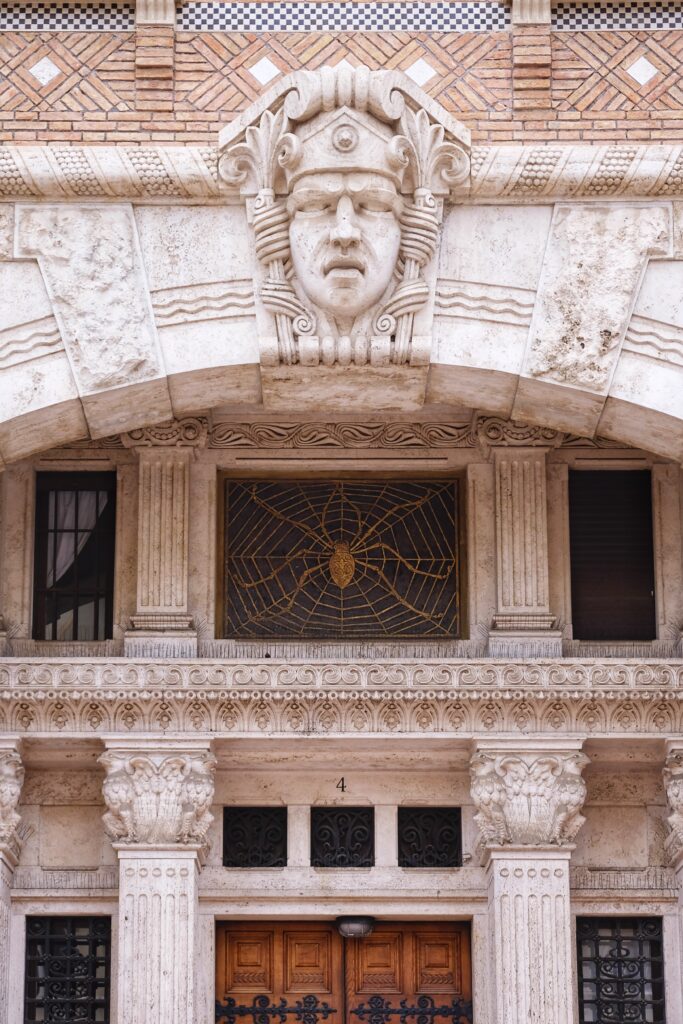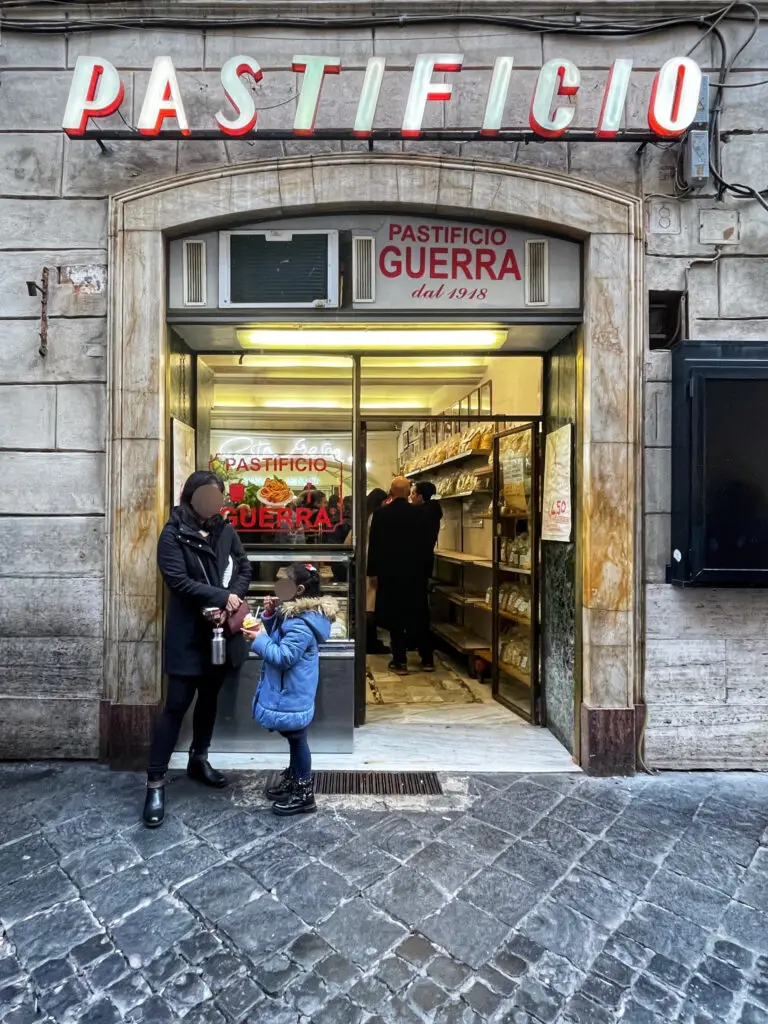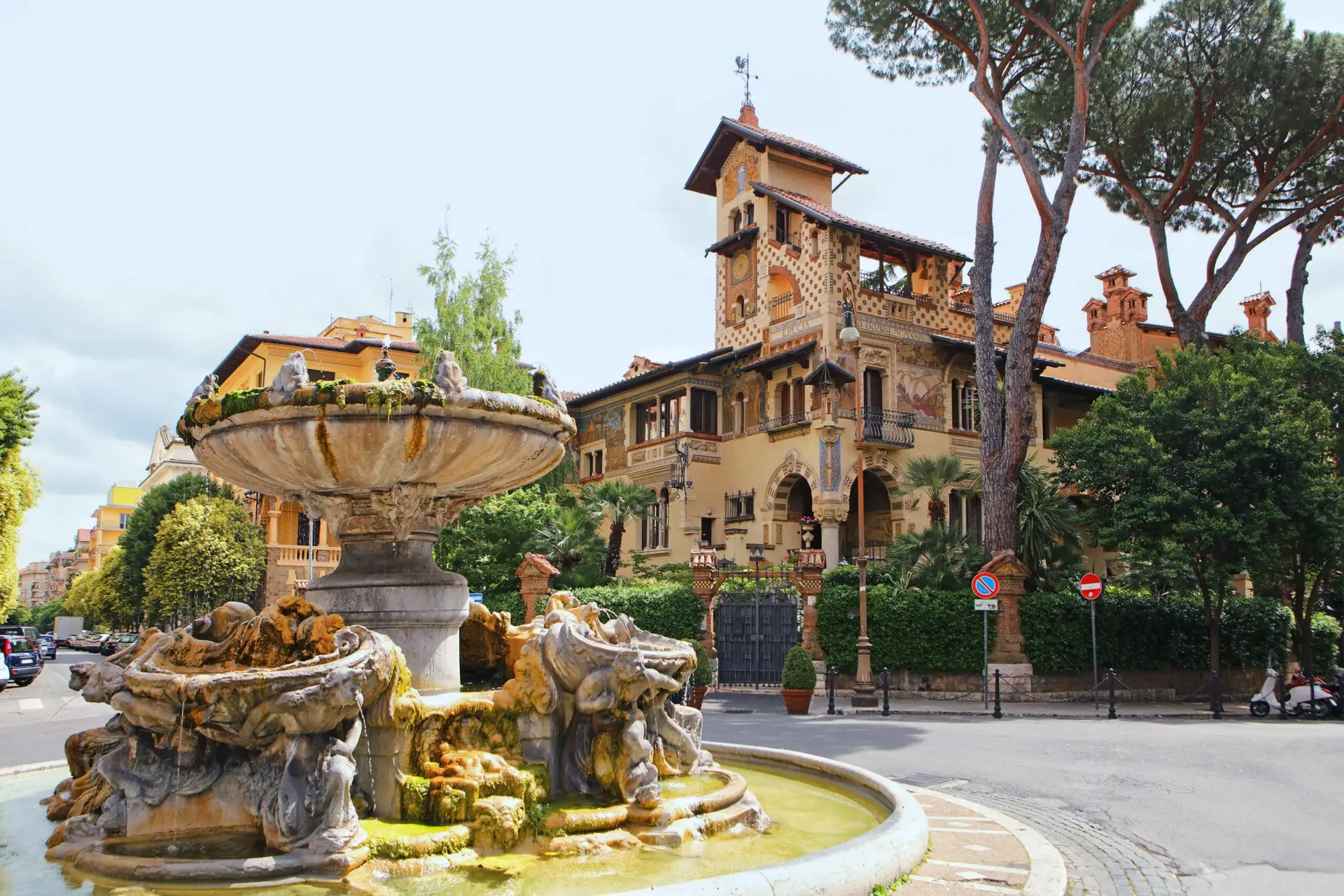First Day in Rome: From Arrival to Night Walks
Arriving in Rome on Boxing Day
I landed in Rome early on Boxing Day, bleary-eyed but ready to explore. After a bit of a wrestle with my luggage on the cobblestones, I arrived at my hotel, booked through MonasteryStays. The entrance? A big, nondescript door that gave no indication of what lay behind it—I had to be buzzed in like some secret society member.
Inside, I was immediately hit with flashbacks to my Catholic (IJ) school days—terrazzo tiles, echoing halls, and that unmistakable quiet. Instituto San Giuseppe di Cluny is a guesthouse run by the Congregation of the Sisters of Saint Joseph of Cluny.
The building itself was the reason I picked this place—a solid brick structure in a vaguely neo-Renaissance style, with a courtyard filled with Mediterranean fan palms and cypress trees. It looked as peaceful as it felt. A friendly sister checked me in early, and after dropping my bags, I hit the ground running.
Google Isn’t Always Your Friend in Italy
First mission: food. I had my heart set on Pinsere, a highly rated pizza spot. Google swore it was open. Google lied. Turns out, Italian businesses aren’t great at updating their hours online. Maybe the owners were still recovering from their Christmas celebrations. No problem—I grabbed a quick bite elsewhere and carried on.
Exploring Quartiere Coppedè: Rome’s Fairytale District
Next stop: Quartiere Coppedè, a neighborhood straight out of a fever dream. Designed by Gino Coppedè in the early 20th century, it’s a wild mix of Art Nouveau, Baroque, medieval, and Greek influences, all mashed together in the best way possible.
When I arrived, the Fountain of the Frogs was surrounded by orange safety fencing—a bit of a buzzkill, but it didn’t take away from the area’s quirky charm. Villino delle Fate (Fairy House) looked like something out of a storybook, and Palazzo del Ragno (Spider Palace) had a massive spider emblem watching over the entrance like an elegant bouncer.


This place is off the typical tourist trail, making it a great spot to just wander. After soaking in the eccentric architecture for an hour, I set off on a 20-minute walk to my next stop.
Galleria Borghese: A Crash Course in Art Appreciation
Housed in Villa Borghese park, Galleria Borghese is packed with Renaissance and Baroque masterpieces by the likes of Bernini, Caravaggio, Raphael, and Titian. The ceilings were ornately decorated, so naturally, I spent half my visit with my neck craned upward. (Pro tip: stand in a corner for a panoramic view without a chiropractor visit.)
Despite my art background, I’ll admit—I hit my limit after a while. But just as my attention started to wander, I stumbled upon the Gladiator mosaics, a detailed and action-packed scene of gladiatorial combat. Unlike the grand frescoes above, these were right under my feet, showcasing real Roman history in tiny, precise tiles. That woke me up.
Stepping outside, Villa Borghese park was buzzing with cyclists and joggers. It’s a beautiful green space, but I didn’t have time to explore much.
The Spanish Steps and a Pasta Reward
A short walk later, I arrived at the Spanish Steps—and it seemed like everyone in Rome had the same idea. Up until now, the city had felt relatively quiet, and I assumed most people were still in holiday mode. I was wrong. The area was packed, with people standing around (since sitting on the steps is now banned), posing for photos, and admiring the towering white and gold Christmas tree at the base.

I quickly took in the scene and turned my attention to food. Via dei Condotti, the famous shopping street nearby, was teeming with people—many drawn by its reputation as a high-end shopping destination, others simply navigating the area’s holiday buzz. But I wasn’t here to shop. Instead, I made my way to Pastificio Guerra, a tiny but legendary pasta shop known for its affordable, freshly made pasta.
For just €4.50, I got a steaming hot portion of homemade pasta. The menu is simple—two choices daily, one meat, one vegetarian. It’s a no-frills, grab-and-go kind of place, where you either stand and eat or take it with you. I wolfed mine down standing near the shop, watching as others did the same. Cheap, quick, and delicious—exactly what I needed before continuing my walk.
Rome’s Churches: The City’s Best Free Museums
The next part of my afternoon was spent wandering into random churches—and let me tell you, Italian churches are next-level free museums. Every single one was a masterpiece, covered in frescoes, sculptures, and golden altars. Forget pricey tickets—just walk in, look up, and be amazed.
Nightfall: Trevi Fountain, Pantheon, and Piazza Navona’s Christmas Market
By evening, I reached the Trevi Fountain, packed as always. I passed by briefly, as it’s on my itinerary for another day, then glanced at the Pantheon, and then off to my final stop: Piazza Navona’s Christmas Market.
The place was alive with food stalls, festive lights, and an unexpected cultural lesson—this is where I learned about La Befana, Italy’s Christmas witch. She delivers gifts to children on January 5th, the Eve of the Epiphany. Forget Santa—here, it’s all about the Befana dolls, which were being sold at every stall.
The Long Walk Back and a Hard Lesson Learned
By now, my legs were staging a full rebellion. Still, I decided to walk over 40 minutes back to my hotel instead of figuring out the bus. Google Maps then tried to lead me through a dark, sketchy-looking park. Not today, Satan. I made a detour and, in the daylight the next morning, realized it was perfectly fine.
Finally, I made it back, legs screaming, body exhausted, but mind buzzing from an incredible first day in Rome. **Lesson of the day: hydrate, stretch, and don’t trust Google with restaurant hours.
PS: It would have been helpful to download the Flush Toilet Finder & Map app. I didn’t know about it until after my trip, and I wasn’t about to buy a drink at a café just to use the restroom. At one point, I made a mad detour trying to find a shopping center just for a toilet. Turns out, there are public toilets, but one I finally found was closed. In hindsight, having the app would have saved me a lot of unnecessary wandering!**
Plan Your Own Day 1 in Rome
Here are some links and tips to help you retrace (or reimagine) my footsteps:
Visits
Quartiere Coppedè
Whimsical and lesser-known architectural gem, designed by Gino Coppedè.
Map: location
Galleria Borghese
Home to masterpieces by Bernini, Caravaggio, Raphael, and more. Entry by timed reservation only.
You can either just purchase entry tickets, or do a guided tour via Get Your Guide. See below.
Trevi Fountain
One of Rome’s most famous landmarks. Best seen early or late to avoid the crowd.
Map: location
Piazza Navona Christmas Market
Seasonal market filled with lights, food, and traditional La Befana dolls.
Map: location
Eats
Pinsere
Pizza I didn’t get to have, but maybe you can!
Map: location
Pastificio Guerra
£4.50 pasta to go, close to the Spanish Steps
Map: location
Stay
Monastery Stays
I’ve stayed in 4 different locations throughout Italy.
Affordable, basic, safe and very clean rooms.
